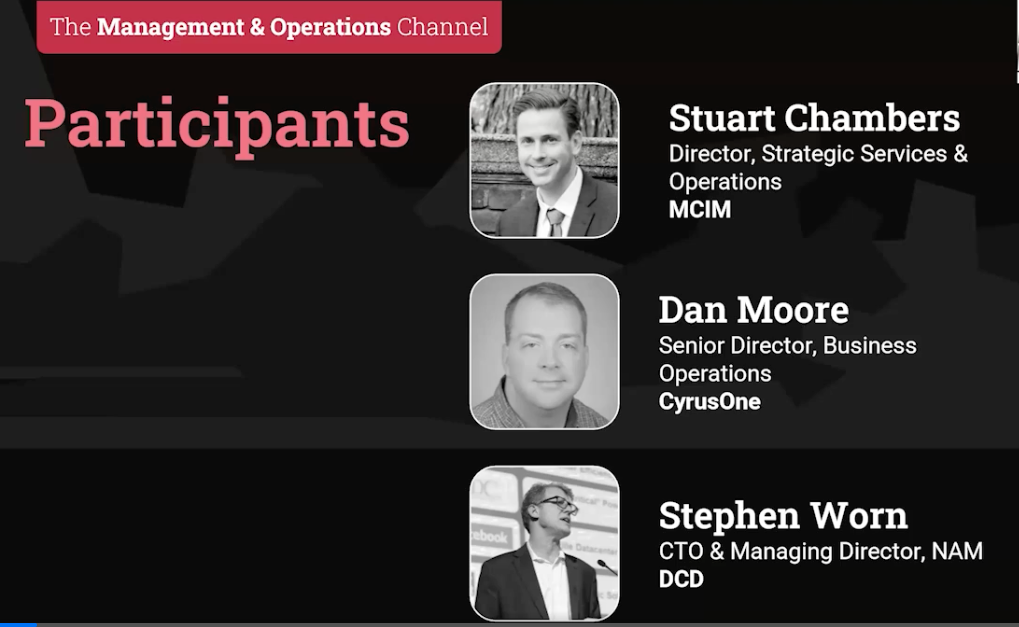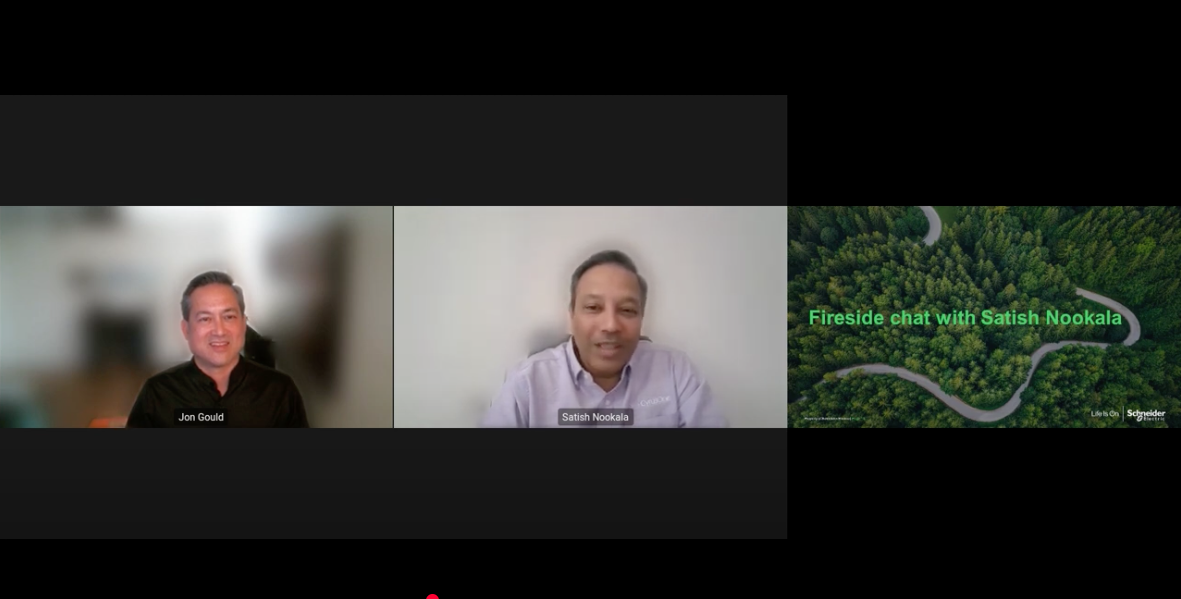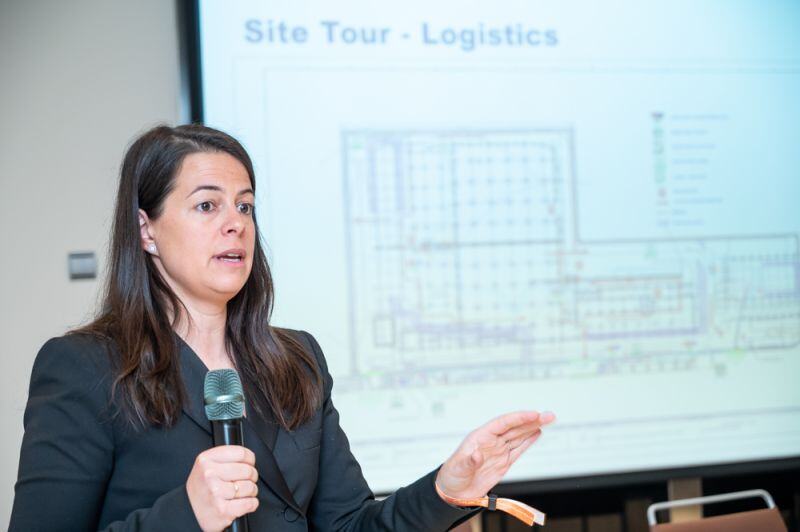With data centers having more and more of their own data available to them, much of it remains under-utilized, or simply not used in the right way. This remains a huge, missed opportunity and one that many operators cannot afford to ignore in the face of rampant inflation and rising energy costs. Too often, data center operations are viewed as simply a cost center, an afterthought, or a ‘nice to have.’
On June 8, Daniel Moore, senior director of operations business at CyrusOne, joined Stephen Worn, CTO and managing director, NAM at Datacenter Dynamics, and Stuart Chambers, director of strategic services and operations at MCIM by Fulcrum Collaborations, for a discussion on the best methods for turning data center operations from a cost center to a profit center.
During the fireside chat, the speakers shared information on how they are harnessing data to address stranded capacity and better allocate resources. They also discussed how to calculate the total cost of ownership for workloads to identify opportunities to improve efficiency. And, shared practical information on how to operationalize data organization-wide to reduce risk.
How do you turn operations into a profit center?
According to Moore: “Operations were historically thought of as just employees that did tasks and walked around buildings. That has evolved. We had to get smarter, we had to get enhanced training and skills, and we put our customers as the core focus, as we always have, but even more so today. We look at what we can do with this data to help our customers and environments be smarter and allow them to operate more effectively, with safeguards and parameters around what they are doing.”
Moore added: “It has evolved to more of a transparent partnership of data flow and we want to make sure customers have the data they need to make their decisions. We are transparent with them about operational parameters within their environments. The data requests are tremendous. What used to be the stagnant Excel reports has changed. We want to be more engaged with our customers, explain operational situations, and help them understand what is going on in their environments… Data is everywhere. How do we harness it? We automate simple things – trend data, find other parameters and situations prior to it being a problem, be preemptive to ensure customers’ environments are safe and operating appropriately.”
Asset-based accounting and lifecycle management – what are the goals?
Moore stated: “We need the cost data and operational data to allow us to understand how our assets are performing. All of this has a correlation tieback to the customer. Without knowing how much we are spending, how many failures, how much we are spending on maintenance, we are kind of in the dark. It’s a lot of platitudes and assumptions or feelings. We can’t make decisions based on feelings. Data is what drives those decisions and asset-based accounting is the basis for a strong effective lifecycle asset management tool… We use multiple inputs to make informed decisions about how we spend our capital.”
How do you manage space, power, time, cost to deliver, client requirements?
According to Moore: “Space and power are key things that data help us manage more effectively. While customers are looking to expand in some situations, they also want to densify what they currently have as far as space. Technologies are advancing regarding densification and liquid cooling. We are helping customers use liquid cooling technologies to leverage their existing spaces and densify… An operational team manages all these parameters to make sure all customers are treated equally and don’t have any negative impact from their neighbors. Data allows us to make those informed decisions.”
Shared environment and shared issues – harnessing your data
According to Moore: “Some of the things that we must do to make sure that we are good neighbors is leverage our BMS data… We must use that data to alert and inform them. We have to protect our customers, and everyone associated… We are proactively alerting them to situational changes that we see to ensure that they don’t have broader impacts within their systems.”
Are customers constantly changing their requirements?
Moore says: “It’s that open and constant communication between the business and the customers. Where are they headed? How can we work together to meet new goals? It’s those conversations with the customers that occur often that keep us informed and challenge us to go out and investigate new technologies and leverage industry knowledge. It’s that open communication, collaboration, and transparency that ultimately keep the neighborhood functioning and everyone happy.”
Data as a resource – key takeaways
Moore concluded: “Customers can leverage our skilled staff to help run their environments. They can let providers like CyrusOne provide those services. From a broader business view, we have such quality data now. It’s paramount for businesses to survive, grow and prosper, to have the data to make informed decisions. We now have the business intelligence tools to help guide us on that journey… Data is allowing us to focus on our customers and have transparent operations which thereby have improved experience and performance.”
Watch the full video discussion here.
Summary
- Data centers are evolving beyond basic operational tasks to become strategic partners, using comprehensive data analysis to help customers operate more effectively and make informed decisions about their environments.
- Asset-based accounting and operational data are essential for understanding performance metrics, maintenance costs, and failure rates - enabling data-driven decisions rather than relying on assumptions or feelings.
- Effective data management helps optimize space and power usage while supporting customer needs for densification and new technologies like liquid cooling, all while ensuring equitable treatment across shared environments.
 by
by 


